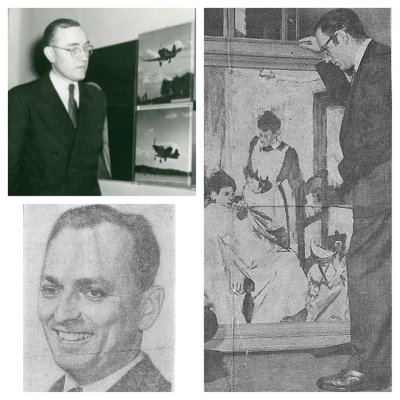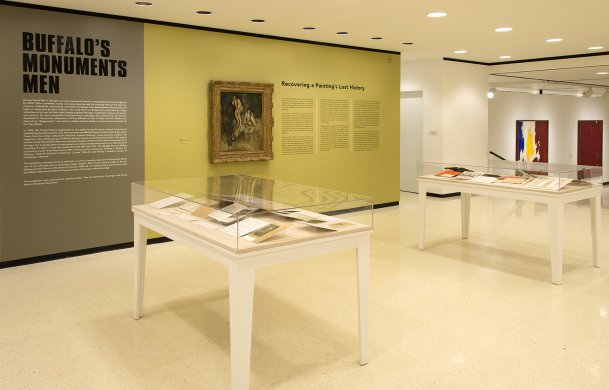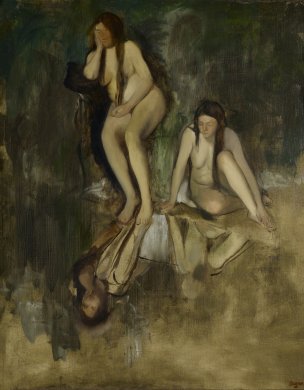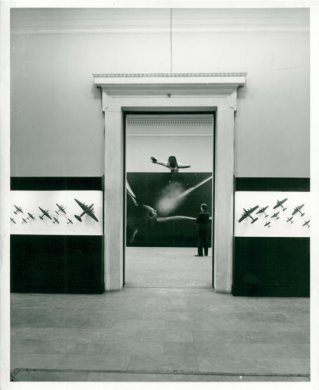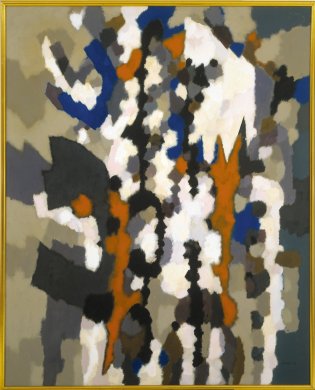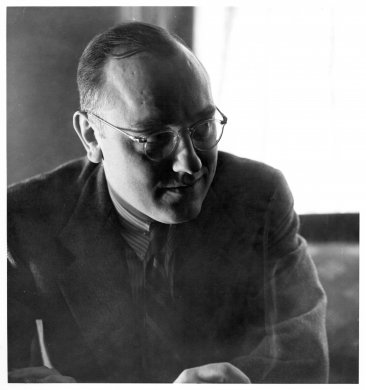During World War II, the cultural and artistic treasures of Europe faced destruction as causalities of war, or worse, capture at the hands of the Nazi regime. In order to save monuments, art, and other cultural riches from damage in the waning days of the war, the United States government established the Monuments, Fine Arts, and Archives Section, or MFAA, of the United States Armed Forces in 1943, under the guidance of President Franklin D. Roosevelt’s Roberts Commission.
Often referred to as the Monuments Men, this group of men and women from several nations contributed their expertise as museum directors, curators, art scholars and educators, artists, architects, and archivists to the fight for humanity. Most of these heroic individuals volunteered for service in order to save as much of the cultural and artistic wealth of Europe as they could. At the end of the war, these individuals continued their mission by actively assisting in the recovery and restitution of works of art that had been looted by the Nazis until 1951. These unlikely heroes risked—and in some cases lost—their lives in the pursuit of protecting history, culture, art, and humanity.
Several past Albright Art Gallery employees served as Monuments Men. These three men included: Andrew C. Ritchie (director from 1942 to 1949), Charles P. Parkhurst, Jr. (curator from 1946 to 1947), and Patrick J. Kelleher (curator of collections from 1950 to 1954).
Andrew C. Ritchie (1907–1978), a known distinguished teacher, scholar, and museum administrator, became Director of the Albright Art Gallery in 1942. Undismayed by wartime restrictions, like a skeleton staff, insufficient operating funds, and a limited exhibition program, Ritchie not only continued normal museum activities but organized a program around the war effort. His work reinforced the need for the public to realize the value of the museum, especially at a time of extreme stress felt worldwide.
With his interest in adapting the museum’s services to the requirements of the war period and his background in scholarship, it was fitting that from July 1945 to January 1946, Dr. Ritchie, on a leave of absence from the Albright, served as served as Chief of the Fine Arts, Monuments, and Archives Section and Representative Commanding General for the United States Forces in Austria, in the recovery of looted art. As an MFAA advisor in Europe, he was responsible for the return of the priceless work by Johannes Vermeer (Dutch, 1632–1675), De Schilderkunst (The Artist in His Studio or The Art of Painting), 1666. His work in the Monuments, Fine Arts, and Archives Division included the recovery and restitution of items of art and furniture taken during the war for Adolf Hitler’s collection and found in the famous Altausee Salt Mine, in Salzkammergut, Austria. For these achievements, he received the Cross of the French Legion of Honor with the rank of Chevalier.
After his tenure at the Albright, he became Director of the Department of Painting and Sculpture at the Museum of Modern Art and then in1957 the Director of the Yale University Art Gallery. Ritchie died in 1978.
Charles P. Parkhurst, Jr. (1913–2008) served as a United States naval lieutenant and was the Deputy Chief of the MFAA section of the United States Military Government in Germany immediately following WWII. He helped coordinate the numerous and varied tasks of the MFAA in postwar Germany, particularly at the Munich Central Collecting Point. For his role in restituting looted artworks, Parkhurst was made Chevalier, Legion of Honor for France. Listen to an oral history of Parkhurst’s experience as a Monuments Man.
Parkhurst returned from Germany and was hired by Andrew C. Ritchie as Curator at the Albright Art Gallery, where he worked from 1946 to 1947. He was also a member of the teaching staff at the Albright Art School, where he lectured on principles and problems confronting the contemporary artist. After leaving the Albright, Parkhurst went on to have a long and distinguished career as an art historian and museum professional at various cultural institutions that included Oberlin College and Allen Memorial Art Museum (Professor, the Head of the Fine Arts Department, and Director of the Museum); the Baltimore Museum of Art (Director from 1962–70), and the National Gallery of Art in Washington (Assistant Director and Chief Curator from 1971–83). Parkhurst died in 2008.
Patrick J. Kelleher (1917–1985) served as a Fine Arts Specialist Officer in a Division of the MFAA at the Wiesbaden Collecting Point from September 1945 until 1946. After the war, he was the Chief Curator of Art at the Los Angeles County Museum of Art before coming to the Albright Art Gallery in 1950, where he became the Curator of Collections until 1954. During his tenure, he assisted AAG Director Edgar Schenck in organizing several successful exhibitions, which included Bosch to Beckmann in 1950 and Expressionism in American Painting in 1952. These two exhibitions traced the history of expressionist painting from its earliest origins to its resurgence in the 1950s. Under Schenck’s and Kelleher’s supervision, an active conversation program was instituted in collaboration with the Technical Laboratory of the Fogg Museum at Harvard University, and later continued by the Intermuseum Laboratory in Oberlin, Ohio. After leaving the Albright, he worked at the Nelson-Atkins Museum and the Princeton University Art Museum. Kelleher died in 1985.
